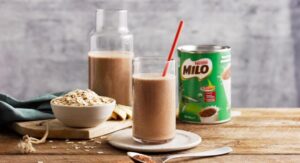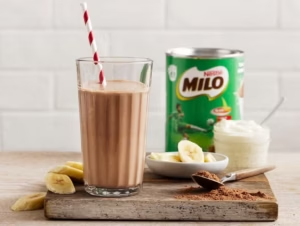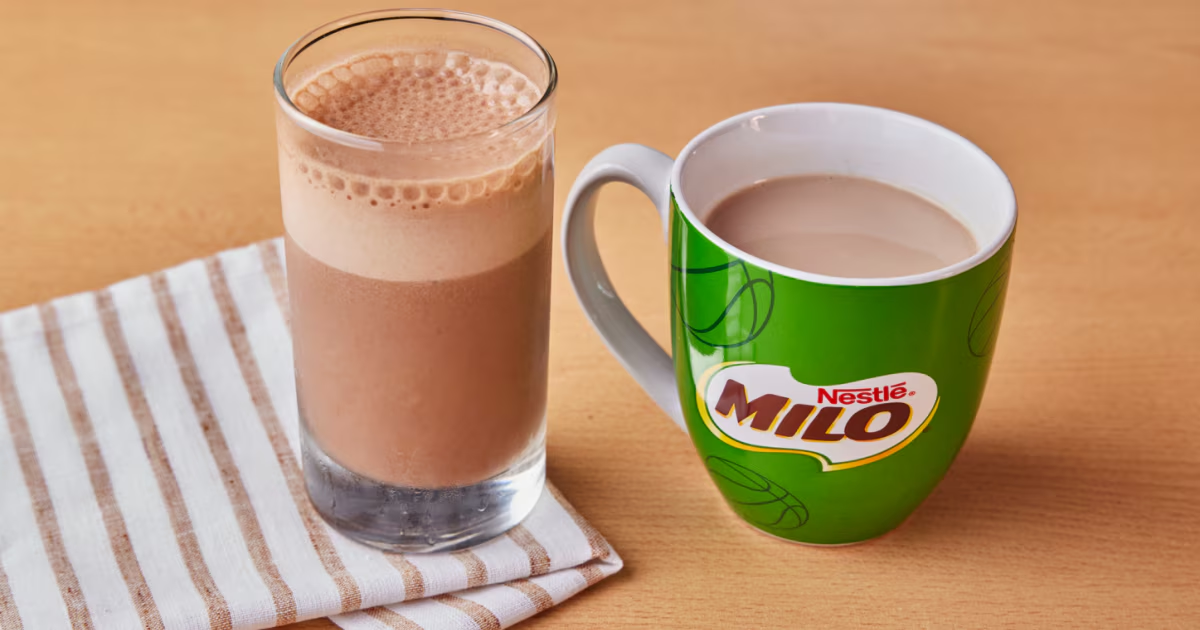Introduction
Milo is a popular chocolate and malt-based beverage that has gained a loyal following across the globe. Originally developed in Australia, Milo is now a household name in many countries, especially in Southeast Asia, Africa, and South America. It is widely consumed by children and adults alike, valued for its rich taste, nutritional benefits, and energy-boosting properties.
This article explores the history, composition, health benefits, global popularity, and different ways of consuming Milo.
History of Milo
Milo was first introduced in 1934 by Thomas Mayne, an Australian chemist working for Nestlé. During the Great Depression, many children suffered from malnutrition, and Mayne sought to create a nutritious yet affordable drink that could help improve children’s diets. He developed Milo as a fortified malted drink containing essential vitamins and minerals.
The name “Milo” was inspired by Milo of Croton, a famous Greek wrestler known for his strength and endurance. Nestlé marketed the product as an energy-giving drink that could help children grow stronger and more active. Over the decades, Milo has become a staple in many households and has been adapted to suit local tastes in various regions.
Ingredients and Nutritional Composition
Milo is made from a blend of key ingredients that give it its distinct taste and health benefits:
- Malted Barley – A natural source of carbohydrates that provides energy.
- Cocoa Powder – Adds the rich chocolate flavor that makes Milo so enjoyable.
- Milk Solids – Enhances the creamy texture and provides protein and calcium.
- Sugar – Adds sweetness, though the amount varies depending on the country and formula.
- Vitamins and Minerals – Fortified with vitamins like B1, B2, B6, B12, and iron, which help support energy production and overall well-being.
Milo is often marketed as a source of “Actigen-E,” a blend of essential vitamins and minerals designed to help release energy from food and improve stamina, particularly for active individuals and athletes.

Health Benefits of Milo
1. Energy Booster
Milo is rich in carbohydrates, making it an excellent source of energy. This is especially beneficial for children, athletes, and individuals with an active lifestyle. The malted barley in Milo provides slow-releasing energy, ensuring sustained performance throughout the day.
2. Supports Growth and Development
Milo contains protein and essential vitamins such as calcium, iron, and B vitamins. These nutrients contribute to the development of strong bones, muscle growth, and overall physical health, making it an ideal drink for growing children.
3. Improves Bone Health
Due to its milk solids and added calcium, Milo helps strengthen bones and teeth. This is particularly important for young children and teenagers who require adequate calcium intake for bone development.
4. Enhances Cognitive Function
Iron and B vitamins in Milo support brain function by aiding oxygen transportation in the blood and improving cognitive abilities. This makes it a great drink for students and working professionals who need to stay focused and alert.
5. Hydration and Recovery
For athletes, Milo can act as a recovery drink. When mixed with milk or water, it helps replenish lost fluids and provides essential nutrients needed for muscle recovery after intense physical activity.
Global Popularity and Regional Variations
Milo is enjoyed in over 40 countries, with each region having its unique way of consuming the beverage.
Australia and New Zealand
In its birthplace, Milo is often consumed with hot or cold milk. Some people prefer adding extra Milo powder on top to create a crunchy texture known as the “Milo Dinosaur.”
Southeast Asia (Malaysia, Singapore, Philippines, Thailand, Indonesia)
Milo is extremely popular in Southeast Asia. It is commonly found in schools, cafes, and even fast-food outlets. In Malaysia and Singapore, “Milo Dinosaur” (iced Milo topped with extra Milo powder) and “Milo Godzilla” (iced Milo with whipped cream and toppings) are local favorites.
Africa (Nigeria, Ghana, Kenya, South Africa)
In Africa, Milo is often mixed with hot water or milk as a breakfast drink. It is widely consumed by children as part of their daily diet, providing essential nutrients to support their development.
South America (Brazil, Colombia, Chile, Peru)
Milo is popular in South America, where it is consumed as a hot or cold beverage. In Brazil, it is often mixed with milk and enjoyed as a morning or evening drink.

India and the Middle East
In India, Milo is marketed as a nutritious energy drink for children and young adults. It is often consumed as a cold beverage with milk. In the Middle East, it is enjoyed both hot and cold, depending on the season.
Different Ways to Enjoy Milo
Milo is an incredibly versatile drink that can be prepared in various ways to suit different tastes and preferences. Some popular methods include:
1. Milo with Milk
The most common way to enjoy Milo is by mixing it with hot or cold milk. This enhances the creamy texture and makes it more nutritious.
2. Iced Milo
Milo can be blended with ice cubes, cold milk, and a little sugar to create a refreshing iced chocolate drink.
3. Milo Dinosaur
A popular Southeast Asian variation, this involves making an iced Milo drink and then sprinkling extra Milo powder on top for a crunchy texture.
4. Milo Smoothie
Milo can be blended with bananas, yogurt, and honey to create a delicious and nutritious smoothie.
5. Milo with Coffee (Milo Mocha)
A mix of Milo and coffee creates a flavorful and energizing Milo Mocha. This is a favorite among working adults who need a boost in the morning.
6. Milo Biscuits and Cakes
Milo is also used as an ingredient in baked goods, such as Milo cookies, cakes, and brownies, giving them a rich chocolatey flavor.
Milo in Sports and Sponsorship
Milo has long been associated with sports and active lifestyles. Nestlé has sponsored numerous sports events, including school competitions and youth development programs. Many athletes endorse Milo as a go-to drink for energy and recovery.
In countries like Malaysia and Australia, Nestlé organizes the “Milo Sports Clinic,” where young athletes receive training and mentorship. These initiatives have helped promote sports and physical fitness among children and teenagers.
Conclusion
Milo is more than just a chocolate malt drink; it is a cultural icon loved by millions around the world. Its unique blend of taste and nutrition makes it a favorite for people of all ages. Whether consumed hot or cold, as a drink or in desserts, Milo continues to be a source of energy, health benefits, and enjoyment for many generations.
With its widespread popularity and adaptability, Milo remains a timeless beverage that will continue to be cherished worldwide.
